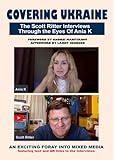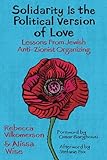Last Saturday (22nd September) The Times printed a leading story about the appearance in court of Dale Cregan, who is accused of the murder of two police officers. The full-page story showed a drawing by a court artist of a quite diminutive man closely surrounded by seven burly policemen, all of whom are clad in body armour and two of whom are holding automatic rifles as if expecting little Mr Cregan to instantly transmogrify into the Incredible Hulk. Below this picture was a photograph of another of these policemen, who is so heavily armed that he would not be out of place on the front line of some major war-zone.
The story also led the TV news of the day. We were treated to images of a motorcade of racing police cars, sirens blaring, accompanying the prison van that presumably contained little Mr Cregan, presumably quite well restrained inside.
The story goes that last Tuesday (September 18th) Mr Cregan murdered two women police officers in a gun and grenade attack after calling the police to a house, supposedly for some sort of assistance. Later the same day he is reported to have given himself up to the police.
Coincidently, it’s about a year since the young Londoner Mark Duggan was gunned down by the police – an incident that led to major rioting in Britain; and the person who killed him recently appeared at an inquiry into the incident, which is still ongoing. Curiously enough there were no screaming sirens announcing the arrival of this person at the inquiry, no heavily armed police escort accompanying him. We have no courtroom artist’s impressions of this person, whose identity is unknown to the public, and who gave his story whilst hiding behind a screen. A few days earlier one of the killer’s colleagues appeared at the inquiry. There were no screaming sirens announcing his arrival either. Instead he strolled casually into the building, one hand in the pocket of his smart brown suit, the other holding the hand of the woman who accompanied him. He looked quietly confident; and why shouldn’t he?
In the last twenty years or so no police officer has been convicted of any crime in connection with the deaths of over 1400 people with whom they were somehow involved. In the recent inquiry into the death of Ian Tomlinson, a newspaper seller who, whilst walking home with his hands in his pockets, was assaulted by one PC Simon Harwood, PC Harwood was, almost inevitably, absolved of any wrongdoing. Had the incident not been captured by a passing tourist’s mobile phone, it’s highly doubtful it would have even gone as far as an inquiry.
Of course, ever since the brutal murder in London of Brazilian electrician Jean Charles de Menezes in 2005 by a gang of our militarised police, none of whom was ever charged with a crime, the concept of justice is well and truly exposed for the shabby illusion it has long been – and that’s without considering the massive frauds by the suited banksters, lawyers, accountants, and their political accomplices – not one of whom is ever likely to serve any serious jail time – frauds which have already cost British taxpayers hundreds of billions of pounds and are likely to continue doing so for some decades to come. No screaming sirens announcing the arrival of any of these villains at a court of law.
If Mr Cregan did what the media say he did, he gets no sympathy from me: it was a terrible, inexcusable thing to do. However, like so many things, it’s very difficult to know what the full story is – let alone where the truth really lies.
However, there was just enough in The Times’ story to make me wonder what Mr Cregan might have to say about it all. According to that fine newspaper,
In court, Cregan was surrounded by police officers in the glass dock and was watched from the public gallery by family members of his other two alleged murder victims, David Short and his son, Mark.
He was charged with the murder of Mark Short, 23, who was shot in the neck as he played pool at the Cotton Tree Inn in Droylsden, Greater Manchester, on May 25. He is also accused of the attempted murder that night of Michael Belcher, Ryan Pridding and John Short. Cregan is accused of then killing David Short, 46, in a simultaneous gun and grenade attack at his home in Clayton, Greater Manchester on August 10, and the attempted murder of Sharon Hark that same day.
At first glance that seems a fairly strange run of events. But several other newspapers shed a little more light than The Times was prepared to do, revealing a possible gang war scenario. The Daily Mirror, for example, ran a story on the 21st September headlined,
Enough is enough”: Police chief vows to end gang wars that led to Manchester shootings.
That raises a couple of rather obvious questions doesn’t it? If the police chief is capable of ending a gang war now (and why should he not be able to?), why didn’t he do so four months ago, say, following the murder of 23 year old Mark Short; or four years ago even? Why have the police been unable to put their hands on Mr Cregan until he gave himself up – in spite of all the latest in surveillance technology, and the army of various anti-terrorist personnel (if Mr Cregan’s alleged actions with firearms and grenades do not qualify him as a terrorist it’s hard to say what would)? Surely if the police had simply done their job months ago, or years ago, they might not be mourning the deaths of two of their colleagues.
It couldn’t possibly be, could it, that keeping inner city gang wars permanently on the boil is as much meat and drink to police chiefs and their budgets, as stoking the fires of regional wars in distant deserts is meat and drink to the War Department, “Intelligence” services and Big Business; and that the very rare murder of a PC or two is no more than the necessary price that must be paid – just as the occasional killing of British servicemen in illegal and immoral foreign adventures is a necessary price to pay for the holy purposes of generals, spooks and their vile City allies?










